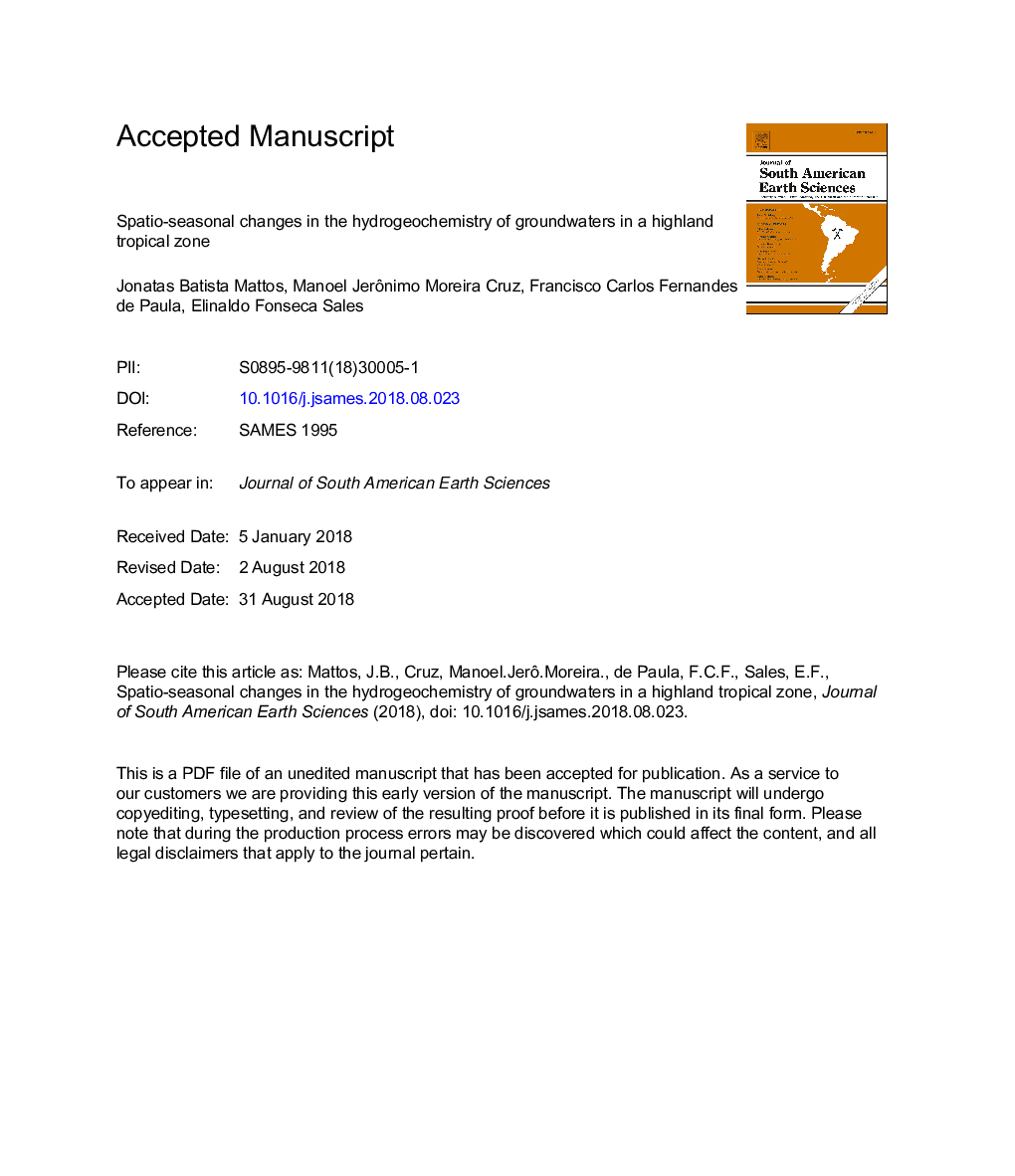| کد مقاله | کد نشریه | سال انتشار | مقاله انگلیسی | نسخه تمام متن |
|---|---|---|---|---|
| 10119916 | 1635123 | 2018 | 34 صفحه PDF | دانلود رایگان |
عنوان انگلیسی مقاله ISI
Spatio-seasonal changes in the hydrogeochemistry of groundwaters in a highland tropical zone
ترجمه فارسی عنوان
تغییرات فصلی فصلی در هیدروژئوشیمی آبهای زیر زمینی در یک منطقه گرمسیری کوهستانی
دانلود مقاله + سفارش ترجمه
دانلود مقاله ISI انگلیسی
رایگان برای ایرانیان
کلمات کلیدی
موضوعات مرتبط
مهندسی و علوم پایه
علوم زمین و سیارات
علوم زمین و سیاره ای (عمومی)
چکیده انگلیسی
The objective this study was to analyze the spatio-seasonal changes of hydrogeochemical parameters and processes of groundwater in semi-confined fractured, unconfined sandy and semi-confined karst aquifers in a highland tropical zone of northeastern Brazil (Lençóis, Chapada Diamantina). Water samples were collected during the dry and rainy seasons to survey electrical conductivity, pH, total hardness, HCO3â, Clâ, NO3â, SO42-, PO43-, Na+, K+, Mg2+, Ca2+, Ba2+ and Fe3+. A cluster analysis was used to identify patterns and similarities between groundwater wells monitored, while Piper diagrams were used to classify water. Statistically significant spatio-seasonal variations were identified using the Kruskal-Wallis test and a Principal Component Analysis. The factors that control water hydrogeochemistry were determined based on the Gibbs Diagram and geochemical modeling using the Phreeqc software. Results showed distinct hydrogeochemical zones, classified in 7 clusters, which revealed 5 representative types of water during the dry and rainy seasons. These waters were: acidic, soft and freshwater (quartz zone); and alkaline, hard and freshwater (karst zone), with very clear characteristics of meteoric waters. Two clusters presented evidence of anthropogenic interference, with higher levels of NO3â. Climatic seasonality significantly influenced water hydrogeochemistry, indicating that the hydrological processes which control changes are mobilization and dilution. During the recharge period of the aquifers (rainy season), a relatively significant amount of the sulfate anion was mobilized to the groundwater, thus changing the hydrogeochemistry composition. The origin of this sulfate may be linked to either the weathering of evaporitic rocks or biogeochemical processes. The probable prevailing hydrogeochemical processes in these waters are: hydrolysis for waters of the quartz zone, residing in fractured and sandy aquifers (rainfall dominance), and carbonation (dry season) and dissolution (rainy season) for waters resident in karst aquifers (rock dominance).
ناشر
Database: Elsevier - ScienceDirect (ساینس دایرکت)
Journal: Journal of South American Earth Sciences - Volume 88, December 2018, Pages 275-286
Journal: Journal of South American Earth Sciences - Volume 88, December 2018, Pages 275-286
نویسندگان
Jonatas Batista Mattos, Manoel Jerônimo Moreira Cruz, Francisco Carlos Fernandes De Paula, Elinaldo Fonseca Sales,
